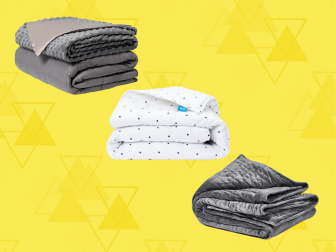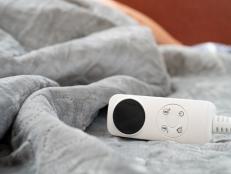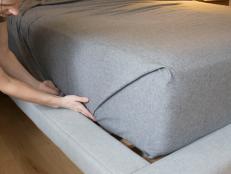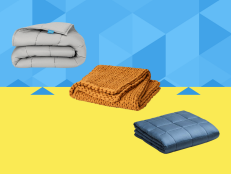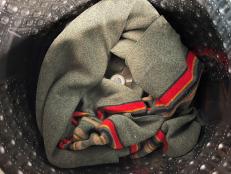How to Wash a Weighted Blanket
Laundering your weighted blanket is easier than you thought.

If washing a weighted blanket seems complicated, think again. Laundering all quilts and blankets is a necessity, weighted or not. Keep your bedding fresh and your weighted blanket clean with these easy laundering tips.
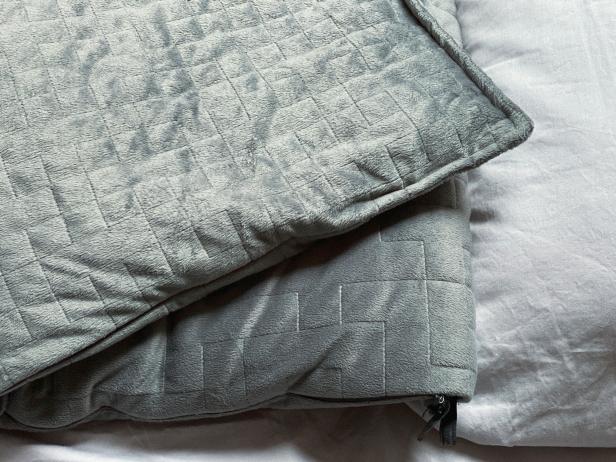
Getty Images; Cavan Images
Weighted blankets can have a removable cover but are more often minky fabric or pocketed microfiber.
Weighted blankets are constructed with several layers of fiberfill and pockets to distribute weighted mass. The pocketed mass, which targets pressure points and treats insomnia, restless leg syndrome and sensory issues, is contained in the quilt and is usually constructed of plastic pellets (think: Beanie Babies), glass beads, sand, steel bearing balls, beans or rice. There are some obvious challenges with laundering a weighted blanket filled with beans or rice, but you should be thrilled to know that many other weighted pellets can easily be thrown right into the washing machine with your regular detergent.
Furthermore, some weighted blankets are sold with a removable cover, making it very convenient to strip the removable cover without having to launder the weighted quilt as often. Unfortunately, most weighted inserts do not stay put very well in any old duvet cover.
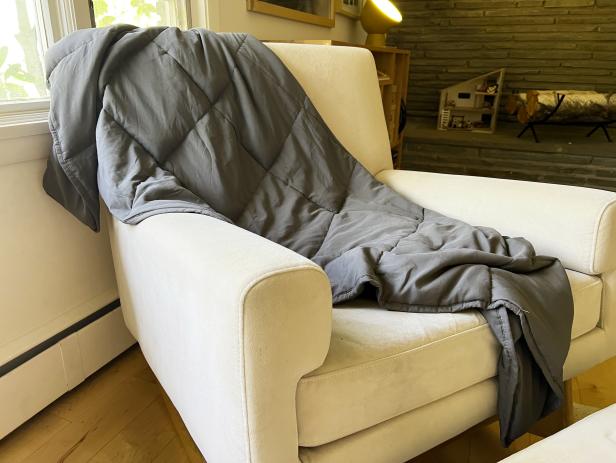
Microfiber weighted blanket with PVC beads and pockets
Tips for Cleaning a Weighted Blanket
- If your blanket is less than 20 pounds, it’s a suitable size for your home washing machine.
- Blankets weighing more than 20 pounds may cause damage to your residential washer. Consider this a job for the laundromat. Their industrial-strength washing machines are built for larger loads.
- Do not submerge weighted blankets filled with beans, rice, barley or any other organic compostable material into water. Water absorbed will lead to mold and rot.
- Air-drying a weighted blanket is always best. Cotton layers are prone to shrinking in the dryer, which can affect the integrity of your blanket and the structure of the pockets. Plastic or PVC pellets are subject to melting under high temperatures, so air-dry if possible or choose a longer low-heat cycle. Steel beads should be air-dried. Sand can clump and take a longer time to dry.
- Glass beads are the one and only fill that’s considered safe to put in the dryer on a regular heat setting
- Surface stains that don’t require a full laundering can often be handled like any spot-cleaning effort. Polyester and microfiber weighted blankets are relatively simple to maintain with a damp, soapy cloth. If you’re not sure what material tops your blanket, refer to the manufacturer's instructions.
How Often Should You Wash a Weighted Quilt?
The frequency of laundering depends a lot on use. Body oils and sweat affect a weighted blanket the same way it affects our clothing. Occasional lounging and napping may incur less wear than if you use the blanket every night. If you do use it nightly, putting a top sheet between the body and the weighted quilt can help keep the fill cleaner for longer.
In general, especially during cold and flu season, wash your quilts and blankets at least once a month.
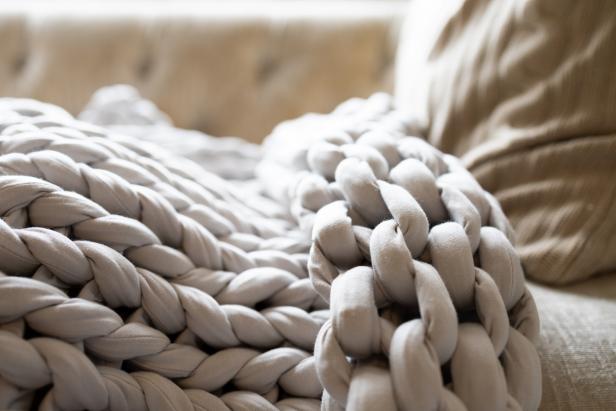
Getty Images; Catherine McQueen
Thick, woven weighted blanket adds warmth and mass to your bed
Can I Wash a Woven Weighted Blanket?
Woven weighted blankets are a different category of weighted blankets. Rather than filled with pellets, they’re constructed using a thick knit.
These blankets are equal parts functional and decorative. When it’s time to wash them, be mindful of the delicacy of the knit (many are loose weaves) and follow the manufacturer's guidelines. Be cautious and use delicate detergents. Wash it as gingerly as you’d launder your favorite wool sweater. Air-dry only!
The Best Weighted Blankets in 2022, Tested by HGTV Editors
Weighted blankets help stimulate pressure points to naturally improve mood and relaxation. Add one of these weighted blankets to your home and start reaping the benefits.






